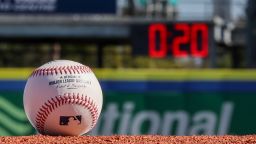Editor’s note: Frederic J. Frommer, a writer and sports and politics historian, is the author of several books, including “You Gotta Have Heart: Washington Baseball From Walter Johnson to the 2019 World Series Champion Nationals.” The views expressed in this commentary are his own. View more opinion on CNN.
It’s hard to look at Shohei Ohtani’s record $700 million contract with the Los Angeles Dodgers without experiencing some reflexive sticker shock.

But a closer look at the deal shows that the rarity of a hybrid pitching/hitting machine such as Ohtani is worth the investment — especially with him agreeing to defer most of the money until after the completion of the contract.
He is both an elite pitcher and an elite slugger — something unheard of not only in today’s game but also in the last century of baseball. There’s a reason he’s often compared to Babe Ruth, the only player in baseball history who has excelled at both skills the way that Ohtani has.
One big difference between the two: Ruth pretty much gave up pitching when he joined the New York Yankees in 1920 at age 25 to focus exclusively on hitting. Ohtani, 29, however, has remained a superstar two-way player. He has an excellent lifetime ERA of 3.01 as pitcher; last year he led the American League with 44 home runs; and he’s won the AL Most Valuable Player Award two of the last three seasons.
True, Ohtani will not pitch next season after undergoing an elbow surgery in September, but he plans to return to the mound in 2025. So the Dodgers are essentially getting two star players in one — a true baseball unicorn. Looking at the top 2024 baseball salaries (after Ohtani), Max Scherzer of the Texas Rangers and Justin Verlander of the Houston Astros are tied for the highest-paid pitchers, at $43.3 million, while Yankees slugger Aaron Judge paces hitters at $40 million, according to Spotrac. A $70 million salary for Ohtani to do both reflects his market value. Essentially, the Dodgers will be paying him $35 million a year for each of his skills.
But as several media outlets, including CNN, reported this week, Ohtani is agreeing to defer $68 million of the annual $70 million salary, significantly reducing the short-term hit on the Dodgers. According to ESPN, Ohtani’s cost toward the team’s competitive balance tax (or luxury tax) will be roughly $46 million. That’s because teams are required to put money aside at the present-day value of the deferred money, which comes to about $44 million a year. The Athletic reported that the deferred money will be paid without interest from 2034 to 2043.
And as The Ringer points out, the deferrals could save Ohtani a boatload of taxes down the line. Because California is the most expensive state to be a millionaire, if Ohtani isn’t living there after his playing days, the $68 million would likely not be subject to as high of a state income tax.
The deferrals were made at Ohtani’s suggestion so that the team would have more money to spend on other players, according to The Athletic.
The Dodgers, of course, aren’t paying only for Ohtani’s hitting and pitching prowess. Although the team already has no trouble filling seats, he will help move branded merchandise and draw more fans to tune in on TV. That second part is key. Baseball, once America’s most popular sport, now struggles to compete for fans’ attention against football and basketball.
As Sports Illustrated’s Tom Verducci wrote, Ohtani “can return as much as $25 million a year in ancillary income and brand value, according to the owner of a rival team.”
Americans have long been fascinated with what we pay our top athletes. There’s a mixture of envy, admiration and a belief among some that society should be allocating its money in different ways.
Back in 1930, Ruth held out for an $80,000 salary ($1.4 million in today’s money); when a reporter pointed out that it was $5,000 more than President Herbert Hoover’s, “Why not?” Ruth supposedly replied. “I had a better year than he did.”
In an illustration of how much athletes’ salaries have exploded over the past century, today, the president’s $400,000 salary is barely half of the MLB minimum salary of $740,000 next year.
Back in 1979, the Houston Astros signed pitcher Nolan Ryan to a then-stunning $4.5 million contract for four years — making him baseball’s first player to make more than $1 million a season. In a satirical Boston Globe column at the time, Leigh Montville imagined a conversation in which a high school guidance counselor encourages a highly accomplished student to pursue a career in baseball.
“What do you want to make of yourself?” the counselor asks the boy, who expresses interest in law, teaching, politics and medicine. “Do you want to be just another bum or do you want to be a millionaire? You have to play baseball.”
Now, of course, anyone fainting at $1 million for a professional athlete would sound like a clueless Dr. Evil in the 1997 film “Austin Powers: International Man of Mystery” when he proposes holding a nuclear warhead for a ransom of … “$1 million!”
Within the insular world of professional sports, $1 million hasn’t been considered a lot of money for a long time. And yes, $700 million is a lot of money.
But it shows the allure of a player who can dominate as both a hitter and pitcher — and the marketing opportunities that go along with the first player to do that in over a century.






